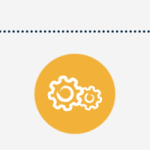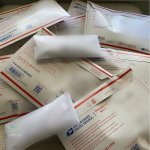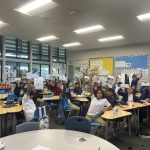by Lucy Madden, CEO
Teams of middle school math, science, history, and language arts teachers all over the US are engaging in the best practice of discovering places where their subject matter content intersects, then collaborating to plan lessons and projects that intersect multiple subject areas. Why do teachers tackle this labor-intensive, time-consuming, challenging process rather than planning with their content teams? Because it works.
Cross-curricular teaching, or instruction that intentionally applies multiple academic disciplines simultaneously, is an effective way to teach students transferable problem solving skills, give real-world meaning to school assignments, and increase engagement and rigor. As a teacher, I was asked every year why we were reading and writing or doing math in science class. This question would prompt an important discussion about the ability to learn new information about anything with sharp reading skills, and the significance of recording science data and findings for accuracy and to share results with others.
As a result, we’ve designed the LPS pen pal program to be a cross-curricular experience for students by integrating science, reading, writing, and geography. Most obviously, our letter writing program, which occurs during science class, gives students an authentic audience to direct their writing to and a primary source text to read. We encourage conversation about non-fiction topics like what to expect during college or STEM careers, but also give students and scientists creative freedom to foster their relationship in whatever ways matches their personalities. By giving students an actual person to write to, many students who are usually apathetic go above and beyond. They are interested in and curious about the audience reading their writing.
Because the letters are not graded but students receive feedback in the form of response letters, our program provides low-stakes practice opportunities for students to engage in a rigorous assignment at their individual level. The letters build student confidence and encourage students to write about science in a unique, exciting format.
Our scientists represent 46 US states and 18 countries. We match students with a STEM role model based on a mutual science interest, which results in a wide geographic variation of scientists in every class. Students are quite inquisitive about the place their scientist lives, so geography organically arises as a discussion topic in many letters. Most students, who are around the age of 10, have not yet traveled far from their homes, and often don’t have contacts in different places they can converse with to learn about new places. Our program connects students with someone who uses personal anecdotes to describe a new place, providing a rich experience that is very different from performing a Google image search. Many scientists include maps in their letters, and some teachers have students create a map to show where their students’ pen pals live, highlighting the diversity of locations represented by their scientists. Students learn about places they didn’t know existed, and many aspire to travel as a result.
Adults apply cross-curricular thinking on a daily basis. We read about non-fiction topics we care about or to inform our work, write in many formats to communicate our ideas or findings, analyze data using math and critical thinking skills, and collaborate with others in different fields to name a few examples. Rarely do adults complete tasks in isolation without utilizing many skills simultaneously, yet schools often teach subjects in silos. Letters to a Pre-Scientist is proud to provide a program that incorporates many subjects into science class to provide a comprehensive, meaningful experience for students, but we are always looking to improve and develop new ways to do this (especially to incorporate math). Have ideas? Email us – we’d love to hear them!





